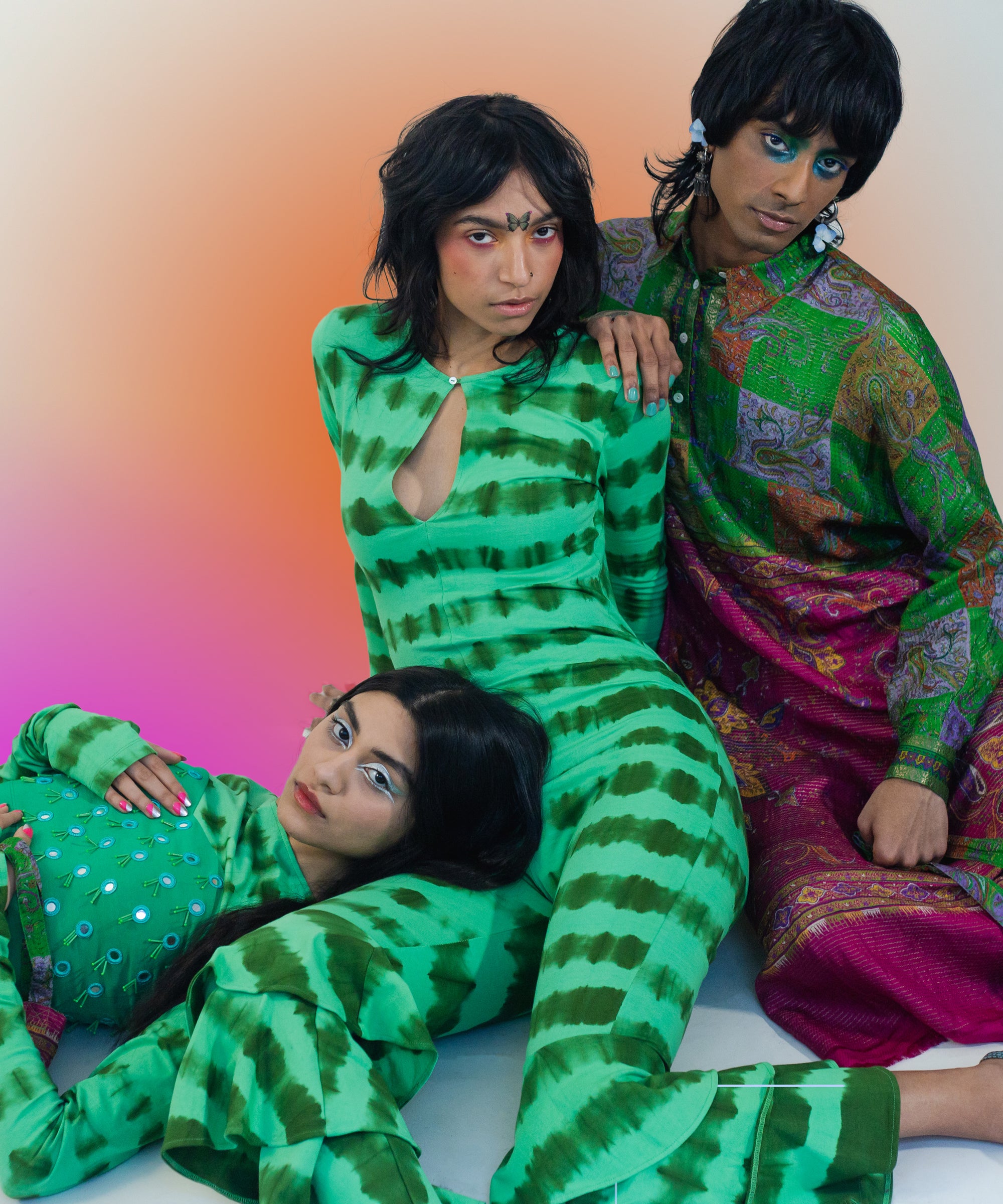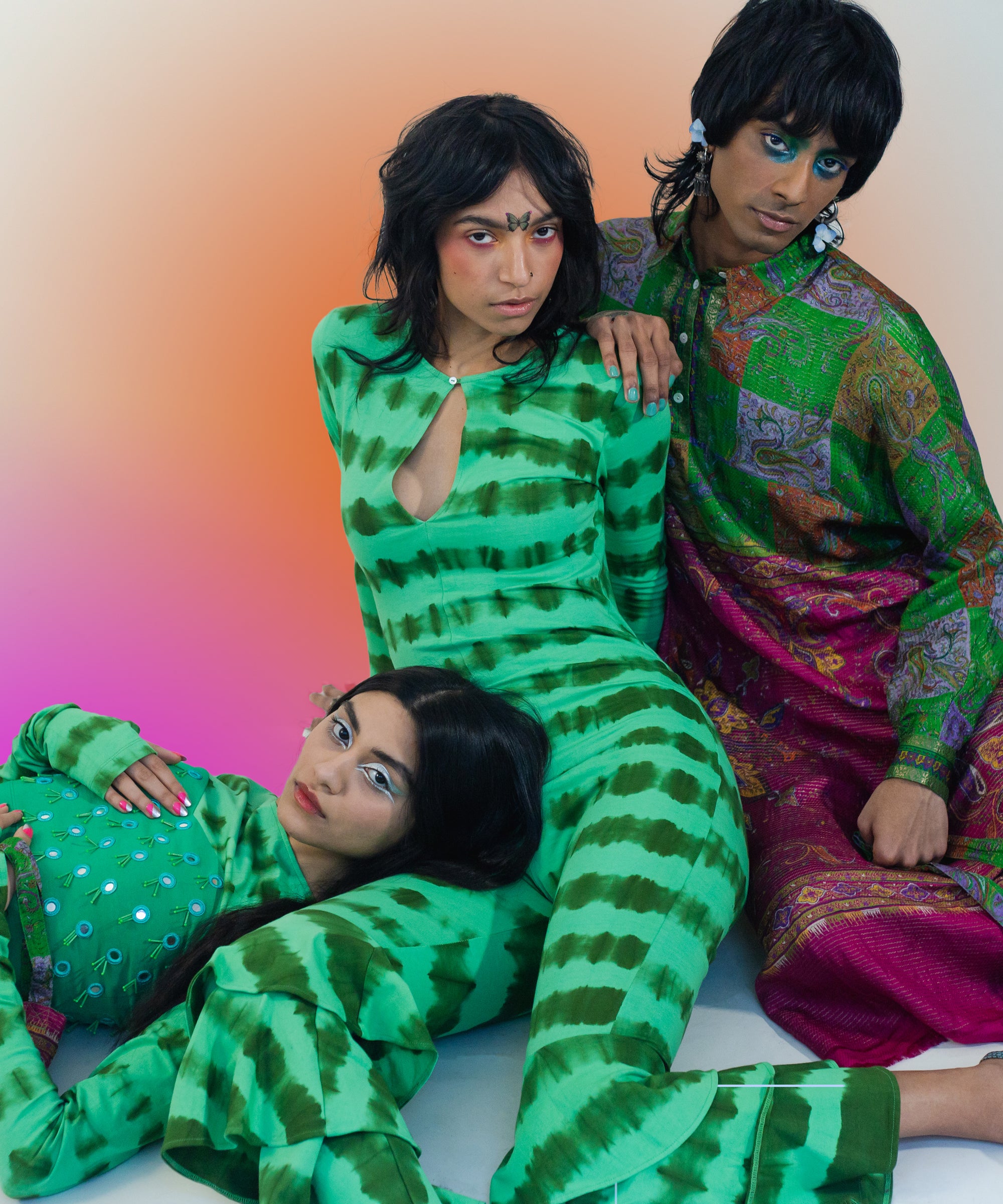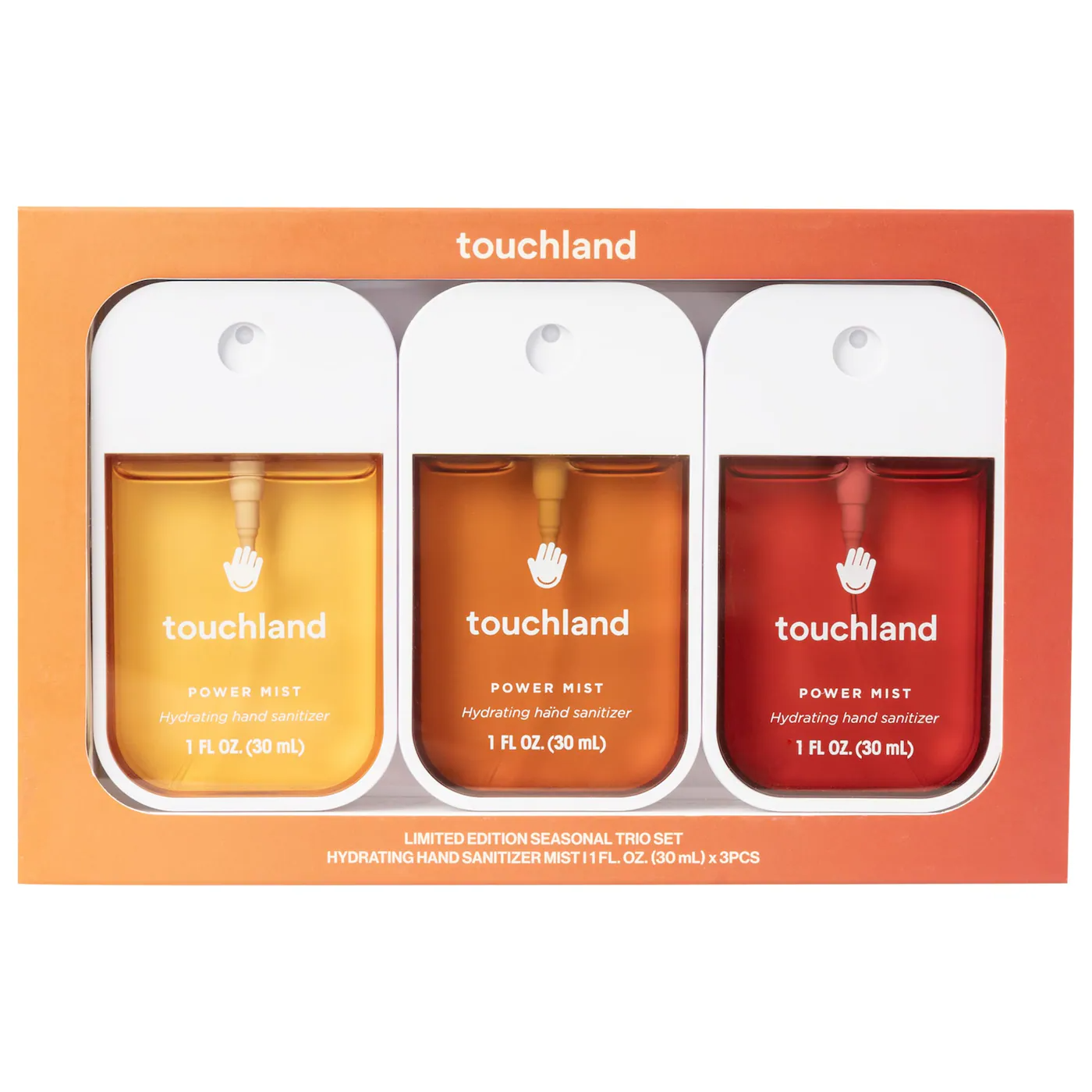

Clothing is a cultural touchstone for communities around the world. Traditional ceremonies, from weddings to quinceañeras, revolve around a particular garment that’s meant to represent not only the occasion, but the history behind it. The sari — a traditional garment worn by women in South Asia — is one of the most recognizable. And while saris hold a significant cultural value, designer Sheena Sood is trying to give them new life through the simple act of upcycling.
“I’ve been thinking a lot about ways to repurpose this material that a lot of us may have but we wear only once,” says Sood, the founder of New York-based indie label abacaxi, named after the Portuguese word for “pineapple” and known for its bold colors and handcrafted techniques.
Last month, Sood launched the Up-Sari Set, a new line of matching sets made from upcycled vintage saris from India. Each set comes with a long-sleeved top, featuring a collar and a shell-button placket, as well as wide-leg pants — all made from woven cotton and silk fabrics sourced from the South Asian country.
“I wanted to design something that is very versatile that can bring this material back into our everyday life,” says Sood. “You can wear [the pieces]together [for]more of a formal look, but you can also mix and match.” Retailing for $500, each set is made-to-order as part of the brand’s “Plants as People” collection, which the designer recently launched, featuring ribbed sweaters, hoodies, and joggers with Y2K-ready butterfly appliqués and tie-dye prints.

Traditionally, saris are worn in India, Pakistan, Bangladesh, Sri Lanka, and Nepal with various styles of fabrics and drapings, depending on each culture and occasion. Although they are heavily rooted in Eastern nations, their cultural heritage has migrated all over the world, thanks to the South Asian diasporas. There are over 100 ways to wear a sari, but the most common style is the Nivi, worn with a fitted bodice and a loose end, called the pallu, draped over the shoulder. Ironically, this style emerged as an adaptation to British ways of dressing during the Victorian era, a lingering effect of colonial rule in the region for nearly a century. Many saris don’t include zippers or buttons, and are instead held together by pins, allowing women to adapt the pieces to their body as they please.
In many ways, the Up-Sari project has been a lifetime in the making. Though Sood grew up in the Midwest, she remembers strolling through local markets in New Delhi and “being fascinated by all the textiles.” She says this experience is largely what ignited her interest in becoming a designer: not only the saris’ rich colors and ostentatious beading, but their structure and functionality. For Sood, saris are “the ultimate design because it’s a piece that can fit almost anybody.” Unlike her mother, who has “never liked wearing saris,” Sood enjoys wearing them and has always had a soft spot for their value as family heirlooms. “There are saris that have been passed down through generations that I would never dare to cut up,” she says.
Sood’s project, which started during the pandemic, is just one of many solutions brought forward by young designers who are trying to come up with strategies to reduce the amount of waste created by the fashion industry. Upcycling, which involves using fabrics from an older garment to create a new one, is one of the most popular. Sood had been playing around with the idea of using the saris as the source material for her upcycling projects, creating custom-made dresses in her studio, as well as inviting customers to send their old saris for her to repurpose. “The material is so beautiful and there are so many that are just used once,” she says.

Therefore, when she came up with the idea for the Up-sari set, she didn’t have a lack of options to choose from. But, in order to procure more saris, Sood has had to get crafty. Due to the pandemic, she’s unable to travel to India, where in “an ideal situation” she’d personally source the saris from vintage sellers, collectors, or people’s closets. But Sood has been able to set up a virtual chain of supply, thanks to a New Delhi-based online vendor.
For this project, she chose saris made from tie-dying techniques that allow for intricate textile designs that form “tiny little circles.” In contrast to more elaborate saris, which can cost upwards of $1,000, Sood says that she’s able to keep the price of her Up-Sari set somewhere in the middle of the spectrum by sourcing more simple garments. This also allows her more room to play as she cuts up the vintage sari to create her matching set. “Even if it’s a custom-made set, I didn’t want the price to be so high,” she says. “I chose saris that I loved for the color and design.”
For a limited time, Abacaxi’s Up-Sari set is available to order on abacaxi-nyc.com.
Like what you see? How about some more R29 goodness, right here?




